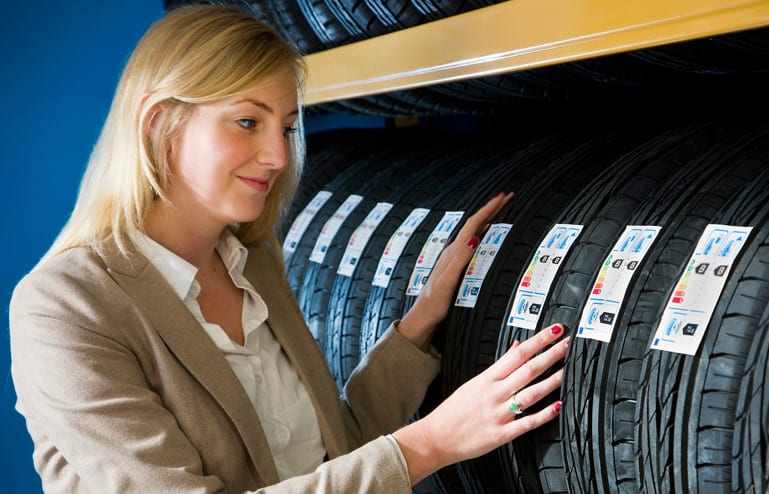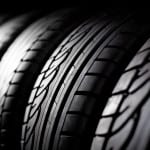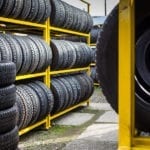Okay, so your tires have reached the end of the of the line, and it’s time to call in the replacements. You want to find the right tires, but where do you even begin?
Is the extent of your knowledge that tires are made of rubber, filled with air, and cost a lot of money? If that’s the case, don’t worry.
This guide explains everything you need to know about tires so you can find just what you’re looking for. The next time you’re shopping for new tires in Cincinnati, you’ll have no trouble tracking down the perfect ones for your vehicle.
Age
Determining the age of a tire is quite easy. On the sidewall, there is a small oval with four numbers inside it.
The numbers tell you when the tire was made. The first two digits represent the week, and the second two denote the year.
For instance, if the numbers inside the oval are “3212,” then you know that the tire was made during the 32nd week of 2012.
This is important information to pay attention to. Even if you think you’re buying brand new tires, there’s a chance that the store may try to sell you rubber that’s a couple years old.
Unless tires are stored properly, damage from sunlight or extreme temperatures can occur, and you don’t want rubber that’s not in tip top shape. So double check the date when you’re buying and make sure you get what you’re paying for.
Size
Of course, it’s essential to know the tire size you need in order to get replacements. But all of those numbers and letters on the sidewall can be confusing. What do they all mean?
Here’s a breakdown that will help clarify what each one stands for. When you look at your tire’s sidewall, you should see the letter “P” followed by a series of numbers with a slash mark in the middle.
The “P” is just there to tell you that the tire has been manufactured to meet U.S. passenger car standards. Occasionally you may see the letters, “LT,” instead. They stand for light truck and mean that the tire is intended to be used on a light truck or SUV.
Additionally, if you see just the letter “T,” that indicates that the tire is a temporary or spare and is not intended for long-distance use or use at high speeds.
Directly after the letter, you should see a three-digit number; that number tells you the width of the tire in millimeters.
For instance, if the three digit number is 215,that means that the tire is 215 millimeters wide from sidewall to sidewall.
The width should be followed by a slash mark, and the next number represents the aspect ratio. That term might sound intimidating, but don’t get stressed.
The height of a tire is always a specific percentage of the width. That percentage is the aspect ratio. So for instance, if the number is 45, that means the height of the tire is 45% of the tire’s width.
High performance tires often have a lower aspect ratio than regular tires; this makes them stiffer, and it provides better handling.
However, tires with more height tend to make the ride feel smoother, and they offer better traction in wet conditions.
After the aspect ratio, you’ll usually see a letter that indicates the construction of the tire. In most cases, it will be “R” which stands for Radial.
Though bias-ply tires used to be quite common, they’re rarely seen now. Radials are almost always used because they offer better efficiency and handling.
To the right of the letter, you should see one last number. That final number represents the diameter of the wheel that the tire is intended to fit onto. So if the number is 17, the tire should be used with a wheel that has a matching diameter.
And that’s about it when it comes to size. You can get all that information just from checking the sidewall of your tire. So if you’re ready to buy some new rubber, just refer to one of your old tires to get the specifics you need.
Load and Speed
On your tire, you’ll see another set of numbers and letters without any slash marks. Those can tell you how heavy a load the tire can handle and the maximum speed it’s rated for.
Again, let’s start at the beginning. The two-digit number is the load rating. It indicates how much weight a tire can take.
It correlates to a number of pounds that can be found on the universal Load Index. The index is easy to refer to online; you can simply Google it.
For example, if the two-digit number is 83, the Load Index will tell you that means your tire can carry up to 1,074 pounds.
Multiply that number by four to make sure that the total weight your four tires can carry is equal to or greater than the weight of your vehicle.
Purchasing tires that cannot support the weight of your car makes driving extremely unsafe. Make sure that your tires have the appropriate load rating.
Following that two-digit number, you’ll see a letter that tells you the tire’s speed rating. You can also find the universal Speed Index online.
If your tire has the letter “R,” that means it can go up to 106 miles per hour. Cars with the highest letters can drive at the fastest speeds. For instance, a sports car with tires that have a “Y” rating can go up to 186 miles per hour.
Type
You can also determine a tire’s type by reading the sidewall. There are different abbreviations for different types. A tire that says “M + S” is a mud and snow tire.
That’s a pretty common type to see because it’s a good all-season tire that can handle a lot of conditions well. However, you can also buy strictly summer, winter, or performance tires depending on your needs.
Max Inflation
Another piece of information that you can find on the sidewall is the max inflation pressure. This is not the number you should go by when you want to know how much air to put in your tires.
The max inflation number tells you the amount of pressure a tire can take before becoming unsafe and/or exploding.
If you’re trying to figure out what your tire’s proper pressure should be, you want to refer to the number that’s just inside your car door.
All cars have their own recommendations, and heavy trucks and trailers have very different advised levels than cars. That’s why it’s always important to check the vehicle in question.
Additional Info
The fun doesn’t stop there. Your tire’s sidewall can tell you all sorts of details, including its treadwear, traction, and temperature ratings.
You can also find a Department of Transportation (DOT) number which tells you where it was made, who made it, and even more nitty gritty facts.
While you might find those tidbits generally interesting, they go above and beyond what the typical consumer needs to know to successfully purchase new rubber for their vehicle.






